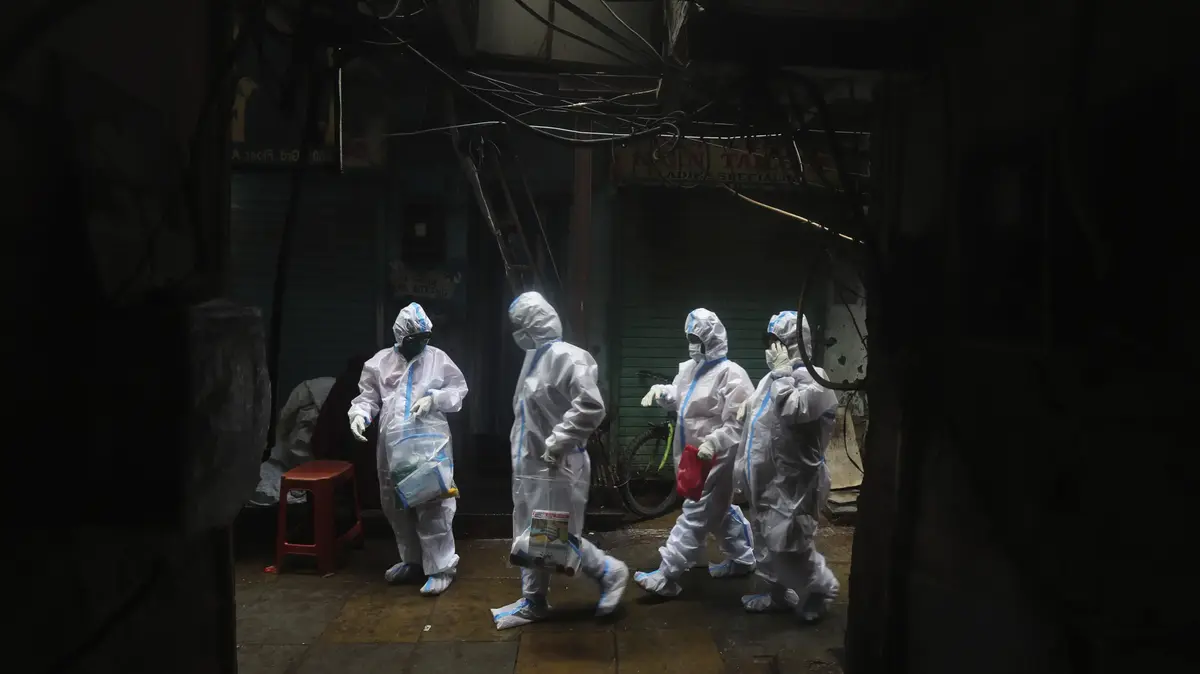- health
- news
"We thought the plague would hit the waves, but it's more like a forest fire."
In April, experts published a report with 3 possible scenarios for the development of the epidemic. None of them were right. "The plague will just keep burning, like a forest fire raging and looking for another human tree for brides"
Tags- Corona
- Corona virus
- Cubid -19
Walla! health
Thursday, 06 August 2020, 07:14In the spring scratching their heads as they try to US experts predict reasonable scenarios of how you behave epidemic of sources. Many of them felt like seasonal flu, corona virus even regressed somewhat during the summer months and then return with renewed autumn storm, with a wave of more severe disease.
These days It turns out that this explanation was probably wrong. "There is no evidence of a decrease in morbidity, unfortunately," said epidemiologist Michael Osterholm in an interview with Business Insider. What will the second wave of the epidemic look like in the fall? At the time, he thought it was the most likely scenario out of 3 scenarios examined. "Now we see there are no waves," he said.
More on Walla! NEWS
Can the corona virus hide in the body for years after recovery?
To the full article
Instead, says World Health Organization (WHO) spokeswoman Margaret Harris, the epidemic is likely to be "one big, ongoing wave."
One big and continuous wave. Citizens on Brazilian streets wear masks (Photo: AP)Michael Ostholm heads the Minnesota Center for Infectious Disease Research and Policy. The second wave scenario he and his colleagues predicted in April was based in part on the progression of the Spanish flu pandemic in 1918 and the avian flu pandemic (H1N1) in 2009. Another scenario described in the same post-Covid-19 prediction report will set cycles of peak periods , Which will characterize the entire summer season. The third scenario described a situation of "slow combustion", in which the infection continues all the time after reaching the peak in the number of infections in the spring.
Reality has created a fourth scenario, which does not align with any of these theories.
"In April we were still waiting to see if it was a pandemic that had real waves - seen as a significant increase in the number of cases and then a decline, then a bigger and stronger second wave, for reasons that are far beyond human behavior.
Instead, he added, "we have discovered that the epidemic is more like a long-burning fire. So we are in the midst of a rapid flare-up scenario followed by highs and lows in infection at different geographical locations and times."
This virus is not seasonal, yet
Respiratory viruses, like the flu, are seasonal. This is partly because low temperatures help harden the outer protective layer that protects these viruses. A more durable outer layer ensures its survival for a longer time, allowing the virus to pass from one person to another. As the weather warms up, this layer becomes more vulnerable, as does the virus.
Like the flu, the new corona virus is transmitted from person to person by a droplet spray, which is emitted during coughing, sneezing, speech, etc. Also, these two viruses can be contagious even when the patient does not feel any symptoms at all. These launch points have made the flu epidemics of the past a fitting model in an attempt to make future predictions about the current epidemic. In particular, the researchers looked at the 1918 Spanish flu epidemic that infected 500 million people. But very quickly they discovered that the corona was the black sheep of this family of viruses.
More on Walla! NEWS
- "Mom died of corona while we were at Dad's funeral"
- Corona patients report: The virus caused our hair to fall out
- An ancient remedy from onions and garlic has succeeded in eliminating resistant bacteria
- Welcome we got rid of: The method to get rid of nail fungus
"People are still busy thinking about seasons. What we all need to understand is that there is a new virus here," a World Health Organization spokeswoman said last week. "Even though it's a respiratory virus and even though respiratory viruses used to act in this form of seasonal waves in the past - this virus behaves differently," Harris said.
At the onset of an epidemic, the climate is unimportant
According to Rachel Baker, a researcher at the Princeton University Environmental Institute, there is a good explanation for why the seasons do not affect the corona virus at this time: "We are only at the beginning of the epidemic, where a new virus encounters a never-before-seen population. "The key factors in the spread of the epidemic, and the climate are almost unimportant, at first," she said.
Baker's latest study, published in May, showed that hot weather moderates the spread of a virus only after a significant portion of the population has already been exposed to it and develops resistance or immunity against it. It is certainly possible that someday the corona virus will also enter a seasonal pattern and worsen in the cold seasons, but it could also take another two or three years, according to Baker, and it is likely that by then a vaccine will also be available against it.

